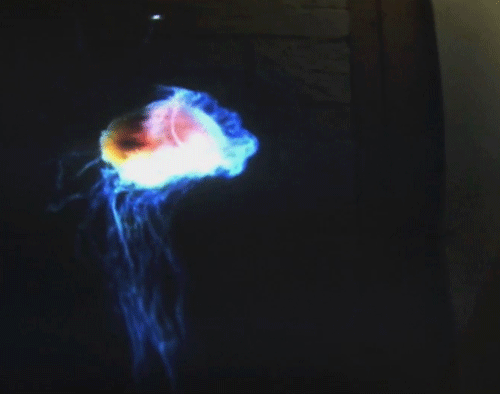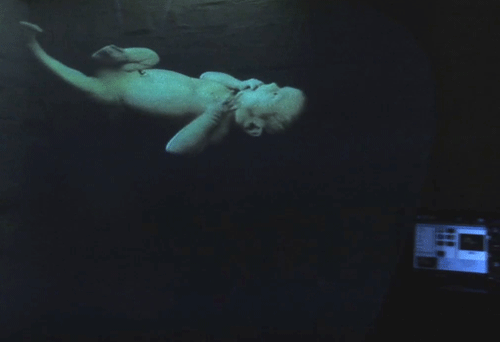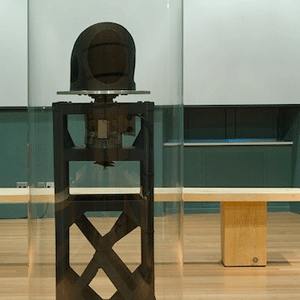‘Help Me Obi’ Art Exhibit Uses 360-Degree Technology
NEWTON STEWART, SCOTLAND—The U.K.-based art team of Chris Helson and Sarah Jackets has developed a technology to enable 360-degree viewing of an image, as part of their art exhibit called “Help Me Obi.” The system shows a moving image seemingly suspended in space, much like the scene in “Star Wars” where Princess Leia seeks advice from a holographic Obi-Wan Kenobi―which is how Helson and Jackets’ art project got its name.

“Help Me Obi” exhibit
Details on the technology are still mostly secret, as the two work through a patent application. Even a name for the device that produces the images is under wraps, according to Helson, but he is working on a production model and will have a name for the system by the time that is ready.
This is not a true holographic technology, as it shows exactly the same view of the image regardless of where you stand. A holographic image will reveal different details as you shift your perspective, but “Help Me Obi” shows the same image to viewers in different locations.
“It creates video objects that float in space that you can walk right around and see from all sides,” Helson said. “It’s projected onto … a spinning screen, not a mirror or spinning mirror.”
Helson and Jackets have been working on “Help Me Obi” for more than seven years, and one of the primary images is that of their son as a wriggling newborn. The boy is now five years old.
Capturing and storing video for this display system uses familiar technology.
“The files are MP4, played from a solid-state media player running an Android app,” Helson said.
Although the images are not truly holographic, Helson and Jackets use the term “hologram” to help explain it to viewers who have no other concept of such seemingly other-worldly technology. Helson said that the biggest challenge for making the system ready for the viewing public was eliminating flicker.

“Help Me Obi” exhibit
Other systems have been shown that create images and videos that can be viewed from any angle, but Helson and Jackets achieved something of a breakthrough in the size.
“As far as we know, this is a significantly larger device than others we have seen,” Helson said. “It’s 300mm or 12 inches high/wide. We could make it larger without too many issues.”
Helson said that previous systems produced images of just a few centimeters across.
As displayed in this art exhibit, the two artists are projecting video clips of their infant son, examples of graphic art similar to CAD drawings, a moving jellyfish and images of the Voyager 1 space probe launched in 1977.

“Help Me Obi” projection system
Helson, who has a background in engineering, can’t define exactly where the technology might lead but that’s not the goal of artwork.
“When you actually stand there with them floating in front of you, they have a life that you connect to in a very different way than you would with a film or video, or even a 3D film,” he said.
“Help Me Obi” will be on display until Aug. 31 at the Alt-w exhibition at the Edinburgh Art Festival.
Get the TV Tech Newsletter
The professional video industry's #1 source for news, trends and product and tech information. Sign up below.
Bob Kovacs is the former Technology Editor for TV Tech and editor of Government Video. He is a long-time video engineer and writer, who now works as a video producer for a government agency. In 2020, Kovacs won several awards as the editor and co-producer of the short film "Rendezvous."

